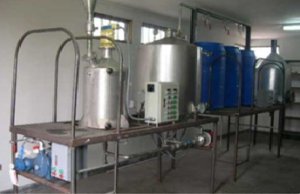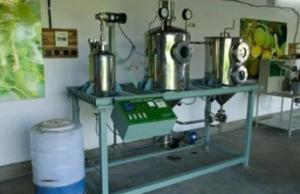TSUE expands hands-on biodiesel program to turn used cooking oil into clean campus fuel
Tashkent State University of Economics is scaling up its biodiesel initiative with a dedicated laboratory space, an upgraded processor, and new analysis instrumentation. Built over the past few years as a hands-on, real-world learning platform, the program turns campus and partner canteen waste oil into B100/B20 fuel while embedding sustainability into coursework, research, and operations.

The new setup brings production, bulk storage, QA/QC, and student research into one integrated facility. A skid-mounted batch processor with color-coded piping and sight glasses for instructional clarity anchors the lab. The unit is scaled at 200 L/day (≈ 13,209 gpy), with an initial operational target of ~50 L/day (≈ 3,302 gpy) to support training, safety drills, and quality-control workflows before ramping to full capacity. Feedstock remains used cooking oil (UCO) collected on campus and from nearby education partners under a formal UCO-collection protocol.
By the numbers (annual energy, conservative academic schedule):
- Target run (~50 L/day × 250 days): 12,500 L/year → ≈ 114,625 kWh-equivalent per year (using 9.17 kWh per liter LHV).
- Scaled capacity (200 L/day × 250 days): 50,000 L/year → ≈ 458,500 kWh-equivalent per year.
Most fuel will be blended and piloted in campus operations backup generators, facilities vehicles, and shuttle trials while a portion supports student-led research on cold-flow, storage stability, and blend optimization.
Beyond production, the lab is being equipped for fuel analytics so students gain direct experience with quality assurance. Instrumentation covers oxidation stability and critical ASTM-style checks (water & sediment, sulfur, free/total glycerin, density/viscosity). Data from each batch feedstock properties, conversion yield, wash/dry parameters, and final assay are logged for traceability and made available for class projects and capstone studies.
To close the loop on water use, TSUE is piloting a constructed-wetland (living-machine) approach for biodiesel wash-water polishing. The system is designed as a visible teaching tool that connects energy, water, and ecology in one place and provides a replicable model for municipal or industrial partners.
The biodiesel lab’s move into a single, purpose-built space solves earlier constraints around storage and safety, and creates a collaborative hub with other environmental projects on campus. It also strengthens TSUE’s pathway in UI GreenMetric: paired with existing solar assets, biodiesel adds a distinct renewable source for EC3; as production data accumulate, the lab will contribute to the EC5 renewable-energy ratio with transparent, auditable kWh-equivalent reporting.
What this means for students and the city: a living laboratory where chemical engineering, energy management, and policy meet practice; a cleaner second life for waste oil; and a campus-scale demonstration of circular economy thinking that can travel far beyond TSUE’s gates.


